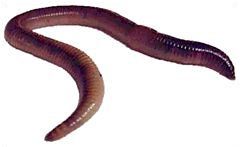People today want convenience, whether it be from their bank, credit card, favorite retail store, or restaurant. They demand it from the companies who hold their loyalty, including their health care providers (you). They don’t want to call and possibly be put on hold, and they want to use an app or schedule an appointment on your website. Here are three reasons your practice can gain by switching to online appointment scheduling.
Herbs & Botanicals
Earthworm (di long)
What is earthworm? What is it used for?
Although earthworms are not herbs, they are nevertheless a vital component of traditional Chinese medicine. Earthworms are actually a type of animal, the Latin name of which is lumbricus terrestris. Earthworms are found virtually worldwide, and live in almost any type of soil that contains the right amounts of moisture and organic particles.
Earthworms are of various sizes and colors; some species in Australia can reach a length of almost 11 feet, although the typical earthworm is no more than a few inches long. Some earthworms are green, but the most common color is reddish-brown, which results from hemoglobin, a pigment in its blood.
 The body of an earthworm is divided into several segments, with a bulging external organ called the clitellum in the front quarter of the animal. The body is tapered at both ends, with the tail end being slightly blunter. Although earthworms cannot see or hear, they are sensitive to light and vibration, and can move quite rapidly when necessary. They are a necessary component of the ecological system, as they help to aerate soil, promote drainage, and produce and draw organic material into the ground. They also serve as a food source for several types of birds and animals, and are often used by man as a type of bait for fish.
The body of an earthworm is divided into several segments, with a bulging external organ called the clitellum in the front quarter of the animal. The body is tapered at both ends, with the tail end being slightly blunter. Although earthworms cannot see or hear, they are sensitive to light and vibration, and can move quite rapidly when necessary. They are a necessary component of the ecological system, as they help to aerate soil, promote drainage, and produce and draw organic material into the ground. They also serve as a food source for several types of birds and animals, and are often used by man as a type of bait for fish.
In China and other parts of Asia, earthworms are also used for their medicinal properties. Earthworms are caught, killed and then eviscerated, with the viscera and organic components washed away. The worms are then dried for use.
According to the concepts of traditional Chinese medicine, earthworm is associated with the Bladder, Liver, Lung and Spleen meridians, and has salty and cold properties. It drains liver heat and clears lung heat, and can also clear heat in the collateral channels. Typically, earthworm is used with other herbs to treat a wide range of conditions, ranging from spasms and convulsions to pain relief, treatment of fevers and certain types of arthritis. It is also used to treat some types of asthma and bronchitis.
How much earthworm should I take?
The average recommended dose of earthworm is 4.5 to 12 grams per day as an oral decoction. Larger amounts (10-20 grams) are used when fresh earthworms are employed. As a powder, 1-2 grams are recommended for oral use.
What forms of earthworm are available?
Dried, powdered earthworm can be found at some Asian markets and specialty stores. Earthworm is also available as a decoction, usually as part of a larger herbal formula.
What can happen if I take too much earthworm? Are there any interactions I should be aware of? What precautions should I take?
Because earthworm has a strong taste that can invariably be salty, "fishy" or both, it may cause nausea and even vomiting in some sensitive individuals. This can be countered by taking earthworm powder, or taking earthworm with citrus fruits or other herbs. In addition, some patients may experience allergic reactions to earthworm. It also should not be taken by women who are pregnant or lactating. As of this writing, there are no known drug interactions with earthworm. As always, make sure to consult with a licensed health care provider before taking earthworms or any other herbal remedies or dietary supplements.
References
- Chen JB, et al. Chemical composition analysis of di long. Journal of Chinese Patented Medicine 1997;19(5):35-36.
- Li FW, et al. One case of di long induced cutaneous pruritis. Shaanxi Journal of TCM 2000;21(1):26.
- Li SL, et al. Research on di long's effect in lowering blood pressure. Journal of Traditional Chinese Medicine Information 1995;12(3):22-24.
- Wang ZW, et al. Research advances on earthworm bioengineering technology. Journal of Chinese Materia Medica 2000;31(5):386-389.
- Zhang FC, et al. Di long's enhancing effect on macrophages' immune activity. China Journal of Pharmacy 1998;33(9):532-535.


